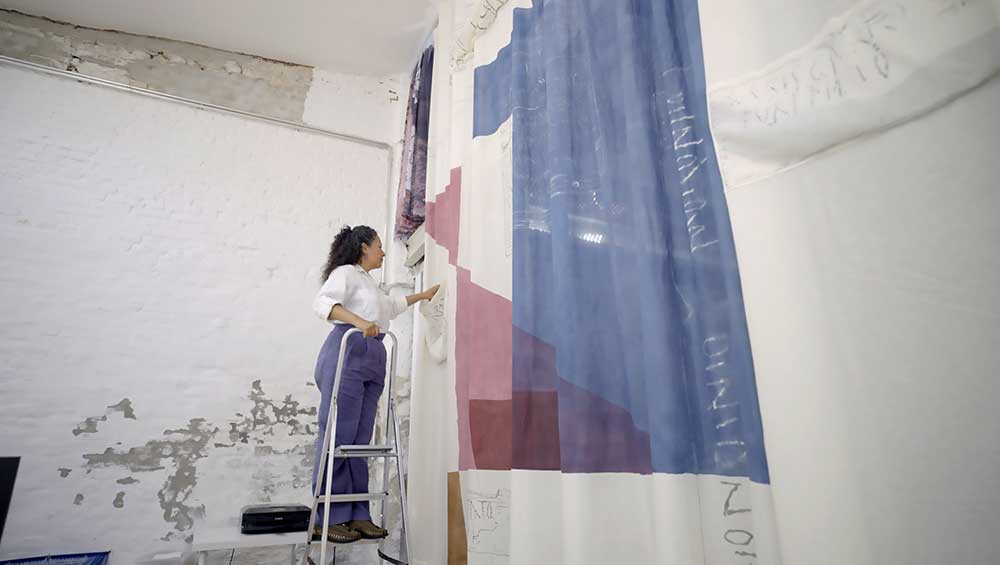
Mariana Castillo Deball in her Berlin studio. © Next Shoot Ltd
by DAVID TRIGG
In the rich, multilayered works of Mariana Castillo Deball (b1975, Mexico City), anthropology, archaeology, literature, philosophy and the visual arts intersect to address an abiding question: to whom does history belong? “We often think that history belongs to the people who write it,” says the Berlin-based Mexican artist. “But, no, history belongs to everyone.” Born from a deep engagement with ethnographic collections, museums, libraries and archives, her playful sculptures, prints and installations interrogate the construction of cultural heritage, examining the different ways in which the study, display and appropriation of historical objects shapes our understanding of history and ourselves. Here, Castillo Deball discusses her installation, Roman Rubbish, at the London Mithraeum Bloomberg Space, which responds to the site’s abundant archaeology.
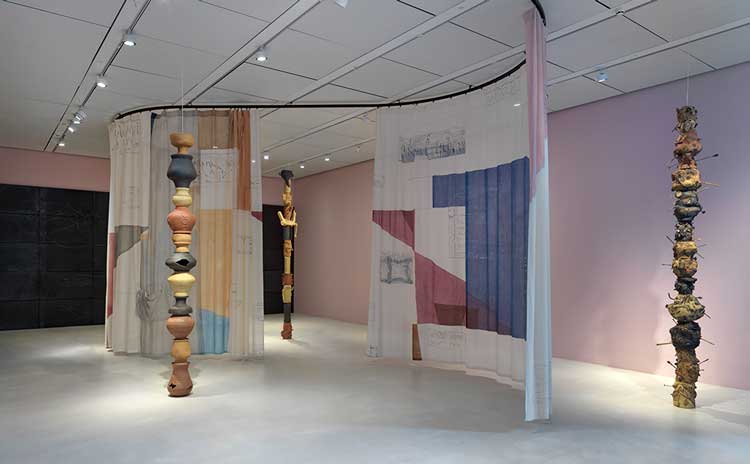
Mariana Castillo Deball, Roman Rubbish, installation view, London Mithraeum Bloomberg Space, 4 August 2022 – 14 January 2023. Photo © Marcus Leith.
“I didn’t know it existed,” says Castillo Deball of the London Mithraeum, also known as the Temple of Mithras, one of London’s most significant archaeological discoveries, which was unearthed near Mansion House in 1954. Originally constructed in about 240AD, the temple was dedicated to Mithras, the deity of an enigmatic soldiers’ cult, who is said to have killed a primordial bull in a cave. Controversially, in 1962, the owners of the site dismantled the temple and carelessly reconstructed it 100 metres from its original location. Today, it has been painstakingly restored close to its original location as part of Bloomberg’s Norman Foster-designed European headquarters. Lying seven metres below our modern street level, the temple is now an immersive visitor attraction. Two floors above, in the Bloomberg Space gallery, Castillo Deball’s extensively researched installation takes as its starting point the 14,000 Roman artefacts discovered by archaeologists during excavations at the site between 2012 and 2014.
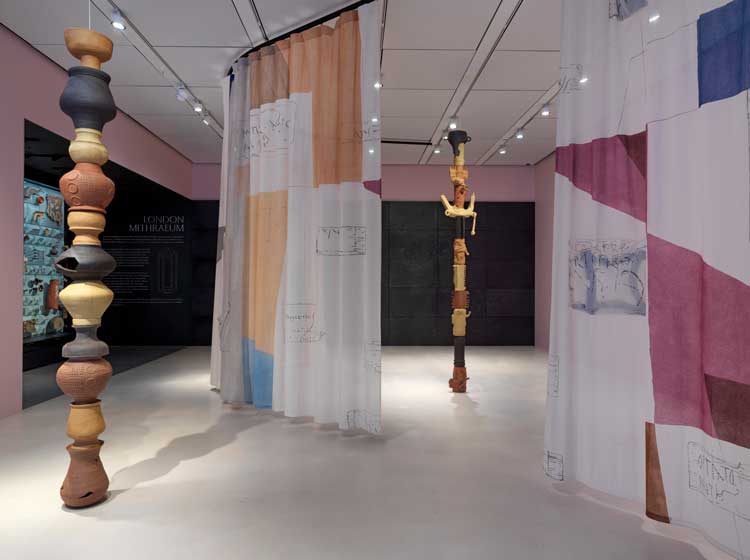
Mariana Castillo Deball, Roman Rubbish, installation view, London Mithraeum Bloomberg Space, 4 August 2022 – 14 January 2023. Photo © Marcus Leith.
“Roman Rubbish was inspired by the various utilitarian objects that were found here, such as wax tablets, ceramic vessels, small bits and pieces of metal and clothing,” says Castillo Deball. “They aren’t associated with the temple; they are everyday objects that were discarded. We think of rubbish as something negative, but rubbish can tell us a lot about how people lived and how they experienced their daily lives.”
Because of the pandemic and associated travel restrictions, she didn’t have direct access to the artefacts while developing the exhibition. “I never saw the physical objects, but I had many conversations with the archaeologists and was given access to their databases; it was a very digital approach to the collection. There were a lot of Zoom meetings, sending images and asking questions. The archaeologists were very generous and also very excited – they tend to think that what they do is not very interesting for anyone else, so when you give attention to their work, they get super happy and want to tell you more.”
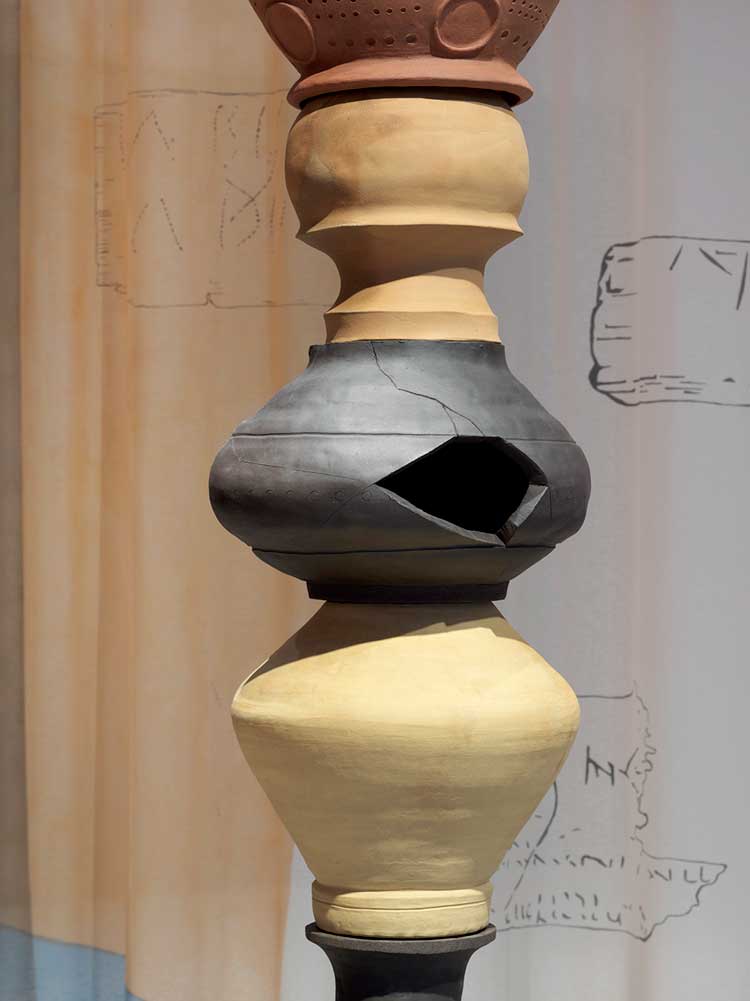
Mariana Castillo Deball, Roman Rubbish (detail), installation view, London Mithraeum Bloomberg Space, 4 August 2022 – 14 January 2023. Photo © Marcus Leith.
Among the thousands of images that Castillo Deball sifted through were many of Roman pottery. Inspired by these ancient vessels, she has created a tall column of stacked ceramic pots, one of three related columns in the show. “It is thought that some of the vessels were not made in the local vicinity, but came from different parts of the Roman empire,” she says. “There was a lot of trading in this area, a lot of different things coming from elsewhere.” Based on Roman designs, her newly made pots subtly reimagine the original vessels. “Everything is on a different scale,” she says. “I’m not making replicas or copies of the objects, it’s a new take on the material.” In addition to altering the scale and modifying patterns, some of the pots have been purposefully broken with cracks and holes to make them look like archaeological objects. “A bit like a new ruin.”
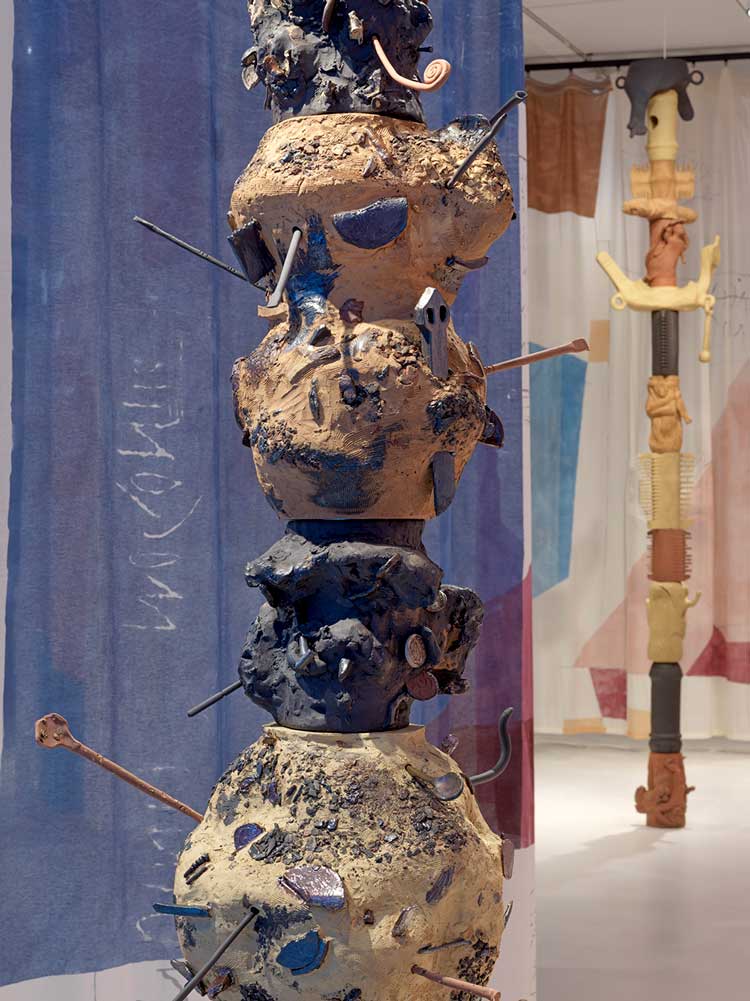
Mariana Castillo Deball, Roman Rubbish (detail), installation view, London Mithraeum Bloomberg Space, 4 August 2022 – 14 January 2023. Photo © Marcus Leith.
An adjacent column draws from the many good luck charms that were discovered on the site, perhaps tossed away by their disillusioned owners. “Many of these objects were worn close to the body,” Castillo Deball says, pointing out the different ceramic forms in the stack. “There are a lot of sexual amulets; this one has a phallus on one side and the symbol of a vagina on the other.” Some of the objects include pagan angel-like figures, while others, based on double-sided wooden combs, “are more abstract and geometric, like a Brâncuși sculpture”. As with the column of vessels, the objects are made with several differently coloured clays to mirror those from which the original artefacts were made. “There is a golden clay, an orange terracotta and a dark terra black clay. Each one behaves differently depending on its mineral content.”
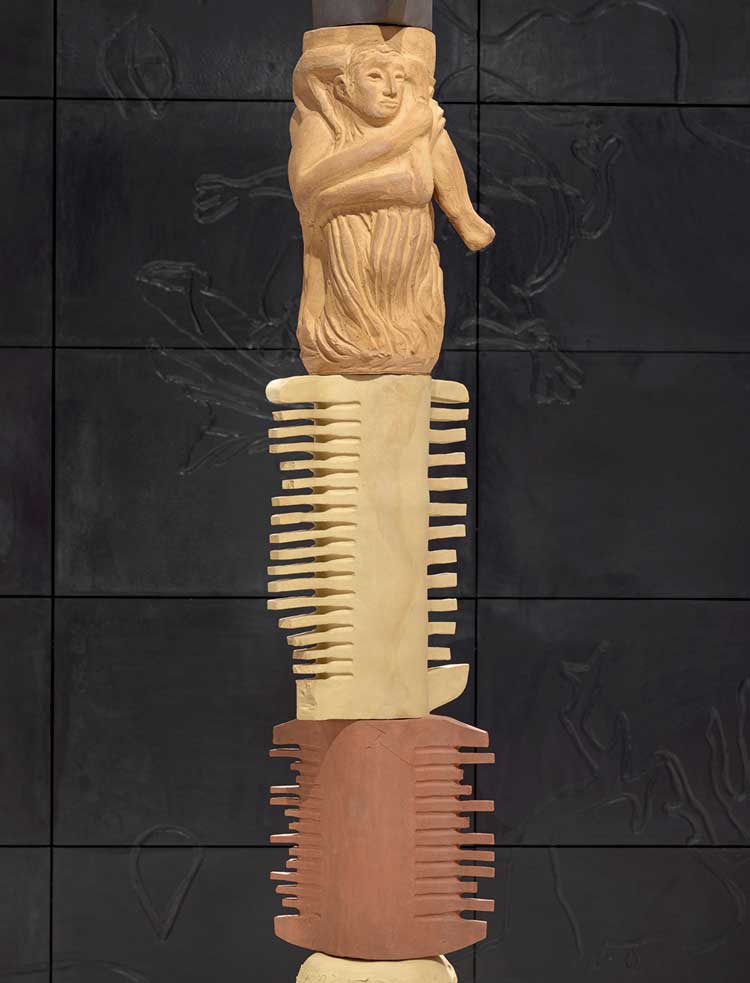
Mariana Castillo Deball, Roman Rubbish (detail), installation view, London Mithraeum Bloomberg Space, 4 August 2022 – 14 January 2023. Photo © Marcus Leith.
Some of the images that the archaeologists sent to Castillo Deball included objects known as “conglomerates”, composite forms consisting of waterworn fragments and pre-existing rocks cemented together. “I was really shocked by these,” she says. “They look like a crumble of fragments fused together.” Made over a six-month period, her conglomerate column consists of several imagined conglomerates – large hunks of amorphously shaped clay embedded with objects approximating coins, nails, cutlery, dice and other fragments derived from the Bloomberg collection. These greatly enlarged versions of the original objects involved a lot of experimentation in her Berlin studio. “I had to work out how to make an object look like a ruin or something that is broken, and how to make bits and pieces of clay look like metal,” she says. “I wanted to create this feeling of something that is halfway between an object and a compilation of fragments. This column also reflects on how archaeology can become something very abstract; it isn’t always easy to understand what you are looking at when you start to dig something out of the ground.”
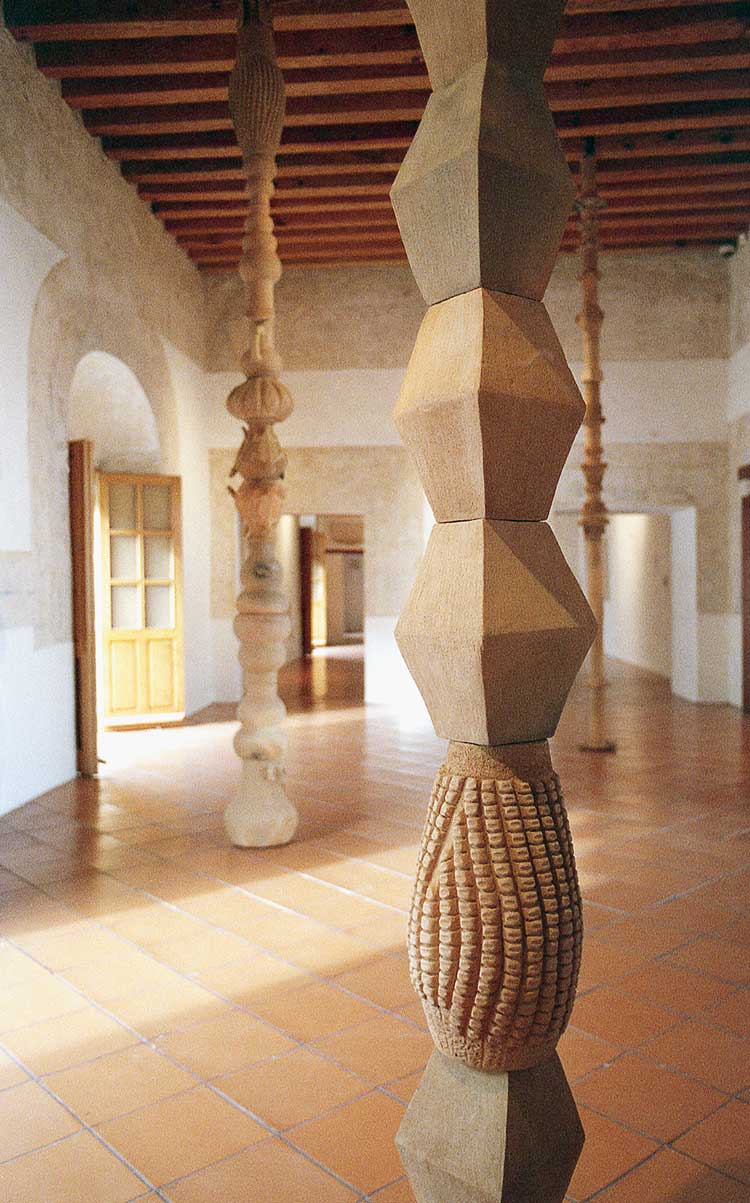
Mariana Castillo Deball, Who will measure the space, who will tell me the time?, 2015. Low temperature fired clay from Atzompa. Installation view at Museo de Arte Contemporáneo de Oaxaca, 2015. In collaboration with Taller Coatlicue & Colectivo 1050°, Oaxaca. Photo: Manuel Raeder.
Ceramic columns have appeared several times in Castillo Deball’s work. The first was in 2015, for a project called Who Will Measure the Space, Who Will Tell Me the Time? at Museo de Arte Contemporáneo de Oaxaca in Mexico. These columns, made in collaboration with Coatlicue ceramics workshop and the pottery cooperative Colectivo 1050°, were also material responses to archaeological objects. “The gallery is a very beautiful colonial building, and you couldn’t really use the walls,” says Castillo Deball. “So, I wanted to make a show where the works became a part of the architecture and told a story, in a sculptural sense.” As with so many of her projects, the exhibition melded fact with fiction to creatively interrogate the relationship between objects and time. One piece nodded to Constantin Brâncuși’s Endless Column (1918). “Brâncuși used a lot of elements from what he called ‘primitive’ art,” says Castillo Deball. “I’m very interested in that moment in modern art when artists began incorporating primitive influences into their work, how it became part of the development of abstract art, but also how these references were never properly attributed.”
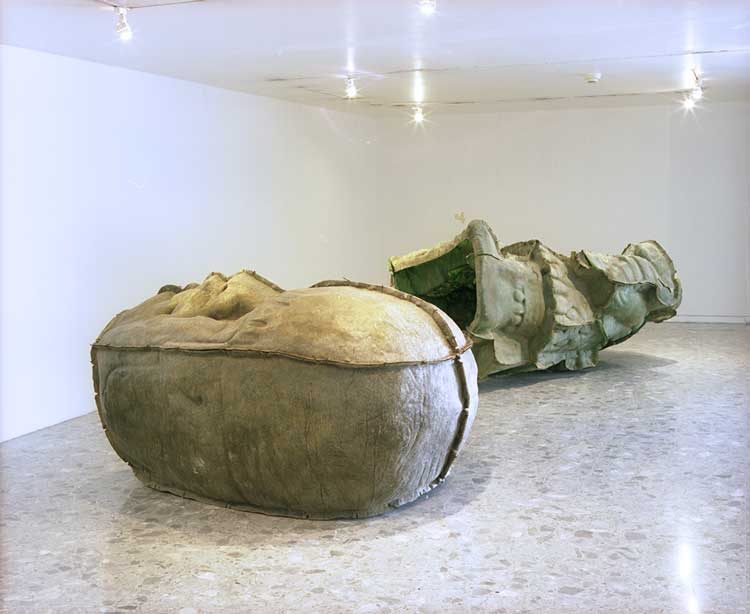
Mariana Castillo Deball, These Ruins You See, 2006. Museo de Arte Carrillo Gil, Mexico City. Photo: Ramiro Chaves.
Castillo Deball’s engagement with archaeology began in earnest in 2006, in her exhibition These Ruins You See, at Museo de Arte Carrillo Gil, Mexico City, which explored the history of collections of Mesoamerican artefacts and replicas, the murky world of forgeries and how museological display has influenced the way in which such objects are understood across cultures and time. “In that project, I was thinking more about the frames of archaeology, not so much about archaeology as a discipline, but as a political tool to examine how objects arrived in European institutional collections, how these collections were built and how the objects have been described and defined throughout the years,” she says. “The other aspect was the question of who has access to these objects; who can see them, who can touch them and who gets to study them. Some of these collections are massive and very few of the objects are displayed at any one time. Sometimes I trace an artefact, or an archaeological site, to see how it has been described across the centuries. Often, they are interpreted in totally different ways, but you can’t always say that older interpretations were wrong and what is now being said is correct. When these objects were created, they had a meaning, but it is impossible for us to know that meaning, even if we invent magic tools – they are what they are, in the moment.”
This perspective accounts for Castillo Deball’s highly imaginative re-creations of the artefacts she studies, such as those comprising the columns in the Bloomberg Space. “Remaking an object helps you to understand and read it in a different way,” she says. “I’m interested in non-written forms of history, so when you re-create an object, you need to work out how it was made, what materials were used and how they were treated. These things were not written down, so the only way to discover them is to make it again yourself. My interest in reproduction started when I began researching some of the very important artefacts that were found in Mexico and brought to Europe, sometimes as originals and sometimes as reproductions. I’m interested in the way that you can have multiple versions of the same object and how replicas, which begin with direct contact with original monuments, end up in different museum collections where they have a different status to the originals.”
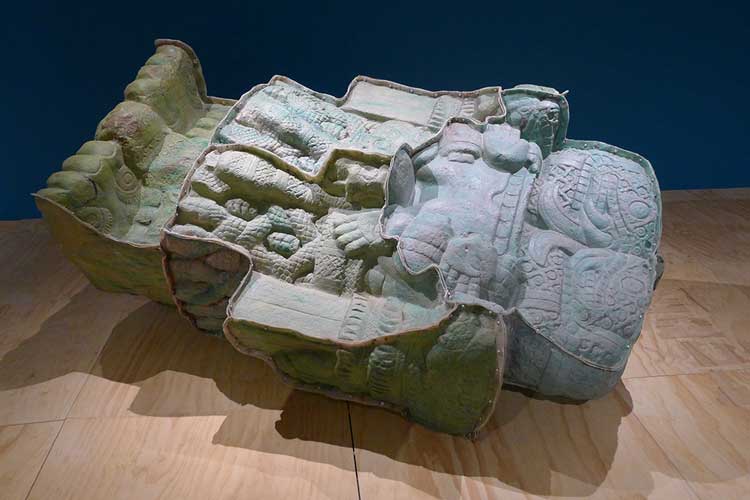
Mariana Castillo Deball, No Solid Form can Contain You, 2010. Fibreglass sculpture from a cast of the original Coatlicue statue. Installation view at Finding Oneself Outside, New Museum, New York, 2019. Image courtesy the artist.
One object that Castillo Deball has previously studied and remade is the Coatlicue statue, one of the most famous surviving Aztec sculptures and an important symbol of Mexico’s cultural heritage, which today is displayed in Mexico City at the National Museum of Anthropology. The goddess statue was discovered in 1790, but was buried on the orders of university professors who worried that its presence might spark a revival of the indigenous worship that the settlers had spent centuries stamping out. The English antiquarian William Bullock disinterred the sculpture in 1823 to make a cast of it, which he displayed at the Egyptian Hall in London. Castillo Deball’s own fibreglass version, titled No Solid Form Can Contain You (2010), was produced using casting moulds of the original statue, which gives the sculpture a distorted, inside out appearance. Lying on its side, as if toppled by colonisers, it highlights the constructed nature of replicas and, indeed, history itself.
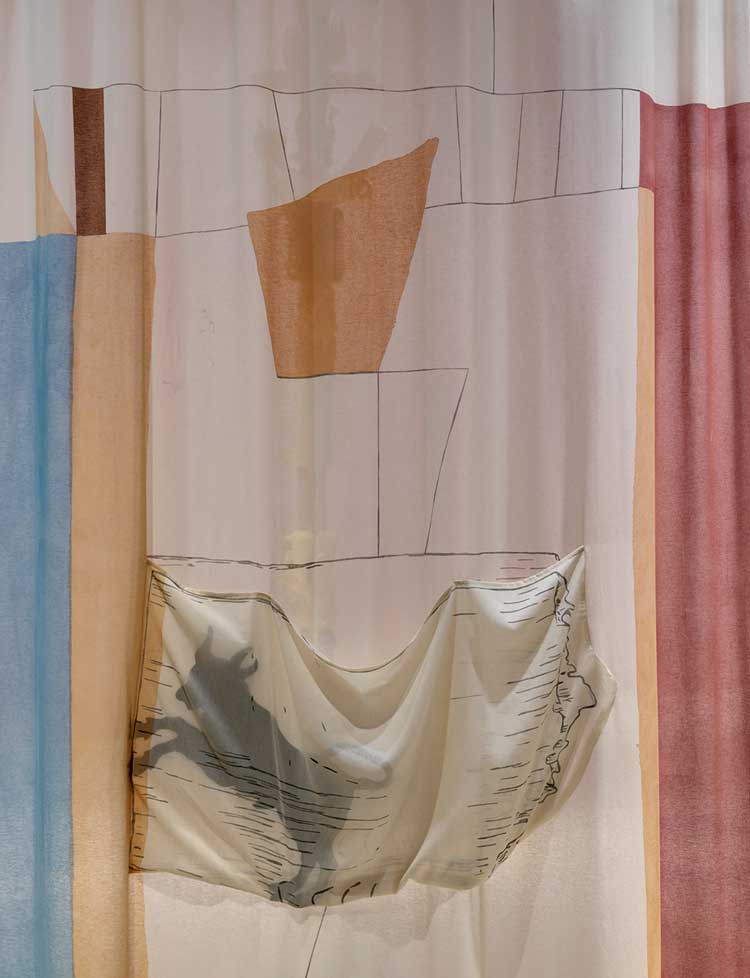
Mariana Castillo Deball, Roman Rubbish, installation view, London Mithraeum Bloomberg Space, 4 August 2022 – 14 January 2023. Photo © Marcus Leith.
Snaking through the Bloomberg Space is a large, hand-painted curtain covered with imagery inspired by Roman writing tablets – portable wooden devices that were covered with black wax and inscribed with a pointed stylus. Common across the Roman Empire, they provided a convenient form of communication long before the ready availability of paper. More than 400 of them were discovered at the Bloomberg site, including the earliest dated correspondence from Roman Britain (AD57) and one containing the earliest known reference to London, which Castillo Deball has incorporated into her curtain. “In Roman times, this was a trading and financial area, and most of the discarded tablets contain messages referring to financial transactions,” she says. Intermingled with her stylised drawings of tablet inscriptions are geometric fields of colour in pastel hues that mirror and complement those in the ceramic columns. The semi-transparent curtain also features several large sewn pockets containing wooden silhouettes based on objects from the Bloomberg collection. Among them are shoelaces, belt buckles and a distinctive leaping bull inspired by a small lead plaque dating from AD43-125 that probably represents the astrological sign of Taurus. “The curtain obscures some parts of the show, so you don’t see everything at once,” she says, as she opens and closes it, demonstrating how it will be reconfigured at different times to expose or conceal parts of the exhibition, much like history itself can be partially hidden or revealed.
The work of the Italian historian Carlo Ginzburg has had a significant influence on Castillo Deball’s thinking. In the 1970s he advocated for “microhistory”, an alternative approach to history that overlooked the dominant figures of power and concentrated on people who have no name, no voice, and little documentation. His 1976 work The Cheese and the Worms, for instance, investigates the life of a 16th-century Italian miller, Menocchio, who was tried for heresy by the Roman Inquisition. “The question of who writes history is really interesting to me,” says Castillo Deball. “It’s usually those in power, so if somebody is being judged by the Inquisition, you never read their own testimony, only what others recorded about them. History is always written from the point of view of power, so how can you go down into the sources and find the history of people who have no voice? Ginzburg says that there is a huge amount of history that has been buried because these voices cannot be heard. This is what I find interesting about the Bloomberg site, a lot of the objects that were found are basically utilitarian, things that people actually used.” This is what first attracted her to the writing tablets, which, when translated, reveal insights into the individual lives of Roman London’s diverse, literate, Latin-speaking population and their various business transactions.
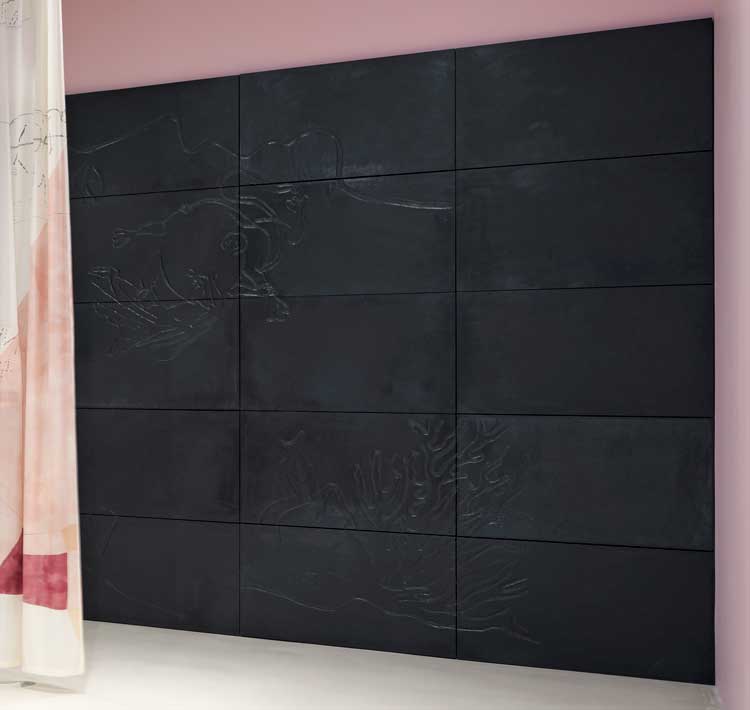
Mariana Castillo Deball, Roman Rubbish, installation view, London Mithraeum Bloomberg Space, 4 August 2022 – 14 January 2023. Photo © Marcus Leith.
The Roman writing tablets have also inspired a monumental installation, a grid of black wax panels covering the gallery’s end wall into which Castillo Deball has inscribed a fantastical image featuring the profile of a Janus-like figure with two heads, a snake and birds eating their own tails alongside other animals and a bull being slain by Mithras. “Everything else in the exhibition is colourful and playful, so I thought it would be interesting to have a very dark work as a backdrop,” she says. “The image is from a drawing I made in 2011 for a project at the Venice Biennale called The Where I Am Is Vanishing, which was about the story of the Codex Borgia, a pre-Colombian pictorial manuscript from central Mexico that ended up in the Vatican Library. Some of the imagery came from the Warburg Institute, where there is a panel of Aby Warburg’s Mnemosyne Atlas that is dedicated to Mithras. One of these images by chance ended up in my drawing. I didn’t know who Mithras was until I started working on the Roman Rubbish exhibition. Returning to this drawing was probably a work of my unconscious, because I already knew that Mithras was there, but I somehow forgot about him.
“The wax wall was very challenging to make because I’ve never worked with wax like this before,” she says. “I worked in a waxwork museum in Mexico when I was 17 years old, and learned a lot about how wax behaves, but I totally forgot about it. When I started to inscribe the wax, I realised that it was much more difficult to work with than I had anticipated; I thought it was going to be very soft and pleasant to inscribe, but the gallery’s air conditioning made the wax go cold and hard. I had a lot of pain in my hands and in my muscles.”
Despite these physical challenges, Castillo Deball still describes the process as “a good experience”, a testimony to her love of making and getting hands on with her creations. “I do a lot of research and each exhibition begins with much text, but once I begin making the works it becomes a lot about the materiality of objects and experimenting with materials.” Despite her rigorous engagement with academic texts and institutions, accessibility remains a priority in all her projects. “Just as history belongs to everyone, this applies also to art. Everyone should be able to visit exhibition spaces and to understand them and to not feel intimidated and to be drawn into the experience and joy of taking part.”
• Mariana Castillo Deball: Roman Rubbish is at London Mithraeum, Bloomberg Space, London until 14 January 2023.